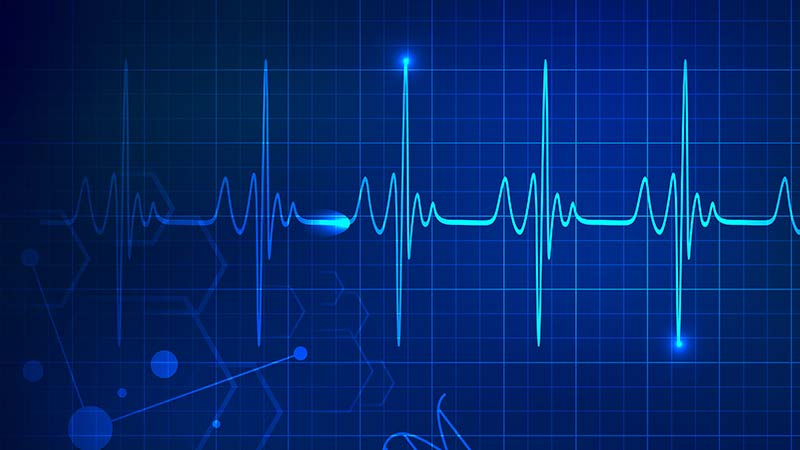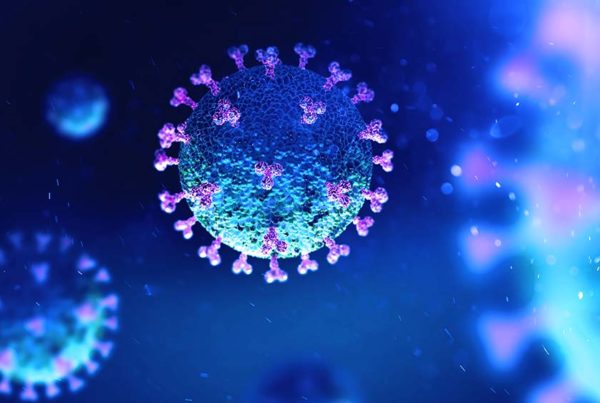
Low resting heart rate may be a sign of antisocial behavior, and can even be found in criminals and psychotics. When do we see the bright red flag?
It’s well known that heart rate can reflect health, physical fitness and stress levels, but increasing evidence shows it may also be a red flag for inappropriate and even violent behaviors as well.
As one of the vital signs, heart rate (HR) is an important number to know, not just during exercise but at rest. An elevated resting HR is associated with a variety of serious health problems beyond being out of shape. An abnormally low HR should also be a call for concern. These HR indicators may be a red flag, too often ignored or not even evaluated until the damage is done: a heart attack, stroke, or worse, violent antisocial behavior.
The HR is regulated by the brain in response to physical (e.g., exercise), biochemical (e.g., diet) and mental-emotional (e.g., fear) stress. In particular, the autonomic nervous system (ANS) continuously raises and lowers the heart rate 24/7. The hypothalamus-pituitary-adrenal (HPA) axis is also involved, with both systems producing stress hormones which affect HR and behavior.
The sympathetic part of the ANS raises the HR, while the parasympathetics lowers it. An imbalance, too much or too little of either component, is reflected in HR changes.
Elevated resting HR is a common sign of poor fitness. It is also found in people with reduced cardiovascular and metabolic health, and is a predictor of future ill health. This includes heart disease, stroke, excess body fat, hypertension, diabetes, and early death. Resting HRs above 80 beats per minute (bpm) can double the chance of death, with rates higher than 90 tripling it.
A good time to check resting HR is when you’re most rested, such as upon awakening and before getting out of bed. If you miss that window, just lying down and relaxing for 5-10 minutes is acceptable. Most important is to perform it the same way each time for ongoing comparisons. Body position affects HR too — it’s lowest in the lying position, and highest when standing. Caffeine, hormone balance, medications, foods, and any undue stress can quickly change it.
While ranges of HR vary with individuals, it’s best to consider it as a measure of physical, biochemical and mental-emotional risk using these general guidelines (for those over 10 years of age):
Low risk — resting HR less than 70 bpm.
Moderate risk — resting HR between 70 and 75 bpm.
High risk — resting HR above 75 bpm.
These general guidelines can be misleading. For example, many highly trained endurance athletes may have very low normal resting heart rates in the 30 or 40 bpm range. Those who are chronically overtrained, however, may also have an abnormally low resting HR, not unlike anyone with an abnormal, unhealthy ANS/HPA axis. This can be assessed relatively easily by a practitioner.
While stress increases sympathetic activity to raise resting HR, chronic severe stress, such as in overtrained athletes and others with undue stress, can fatigue the sympathetics leading to autonomic imbalance, eventually causing an abnormal lowering of the resting HR. In this case, the problem is that of too little sympathetic with relatively increased parasympathetic action. Low resting HRs that are abnormal are also found in those who are chronically burned/stressed out, and in adolescents as undue stress can start before birth in mothers who have high stress.
In young people, low resting HRs may be a sign of antisocial behavior, and can even be found in criminals and psychopaths. The term antisocial refers to unhealthy or dangerous actions, as opposed to asocial which is an avoidance of social interaction.
Antisocial behavior may serve as a much needed stimulant, a “reward” of sorts that in part compensates for the severely reduced sympathetic stimulation. Starting a fight, stealing, or similar acts become a trigger for this much needed burst of action. Obviously this is not an acceptable way for people to balance their nervous-system deficits, nor is it an excuse for improper behavior.
Many studies, but not all, show that abnormally low HR is a predictor of antisocial behavior across the course of a lifetime, ranging from childhood into adulthood, and predictive of aggression, conduct problems, and crime. Extreme examples of antisocial activities include violent criminal behavior and psychopathic traits. Fearlessness and sensation-seeking may be two common characteristics found in psychopaths, who can also be dishonest, impulsive and manipulating with deficits in remorse, emotion and attention.
A variety of lifestyle factors can significantly impair autonomic balance leading to low HRs and possibly preventing inappropriate behaviors. These are modifiable, and may include reducing excess biochemical, physical, and mental-emotional stress. More often, it’s an accumulation of these stressors that impairs the function of the ANS and HPA axis. Two common stressors include:
- Food. The most common food factor is refined carbohydrates, including sugar. This significant food stress can immediately impair ANS and HPA axis function, even after one snack or meal. Like their reduced self-control of social actions, individuals with ANS/HPA stress tend to lose self-control of eating foods that trigger rewards as indicated by HR variability (itself a predictor of dietary self-control). One new study entitled “The impact of junk foods on the adolescent brain” shows how poor dietary choices can derail normal neurodevelopment.
- Exercise. Excessive high-intensity training with high heart rates can accumulate undue stress that can also impair ANS and HPA axis function. High lactic acid production, a common feature of high-HR training, can also adversely affect brain function.
The breakdown of our social healthcare system is partly due to its focus on the symptoms rather than identifying potential markers early and preventing problems from happening. Instead we wait for the heart attack or the violent criminal act — the bright red flag — then focus on the result rather than address the cause to prevent it.
Monitoring resting heart rate is one tool we can use to identify potential issues and make adjustments before they manifest into larger problems like disease or inappropriate/antisocial behaviors.
Bibliography
Fagan SE et al. Social Adversity and Antisocial Behavior: Mediating Effects of Autonomic Nervous System Activity. J Abnorm Child Psychol. 2017;45(8):1553-1564.
Gao Y et al. Interaction between prenatal maternal stress and autonomic arousal in predicting conduct problems and psychopathic traits in children. J Psychopathol Behav Assess. 2017;39(1):1-14.
Haghshomar M, Rahmani F. Cognitive Challenge to Choose Healthier Food Is Reflected in Heart Rate Variability. Front Neurosci. 2017;11:353.
Lorber MF. Psychophysiology of aggression, psychopathy, and conduct problems: a meta-analysis. Psychological Bulletin. 2004;130(4):531-552.
Oda E Aizawa Y. Resting heart rate predicts metabolic syndrome in apparently healthy non-obese Japanese men. Acta Diabetol. 2014;51(1):85-90.
Ortiz, J, Raine A. Heart rate level and antisocial behavior in children and adolescents: A meta-analysis. J Am Acad Child & Adolescent Psychiatry. 2004;43(2):154-162.
Raine A. Biosocial studies of antisocial and violent behavior in children and adults: A review. Journal of Abnormal Child Psychology. 2002;30(4):311-326.
Raine A. Low resting heart rate as an unequivocal risk factor for both the perpetration of and exposure to violence. JAMA Psychiatry. 2015;72(10):962-964.
https://www.biorxiv.org/content/early/2018/02/13/205005.full.pdf+html
Reichelt AC, Rank MM. The impact of junk foods on the adolescent brain. Birth Defects Res. 2017;109(20):1649-1658.








